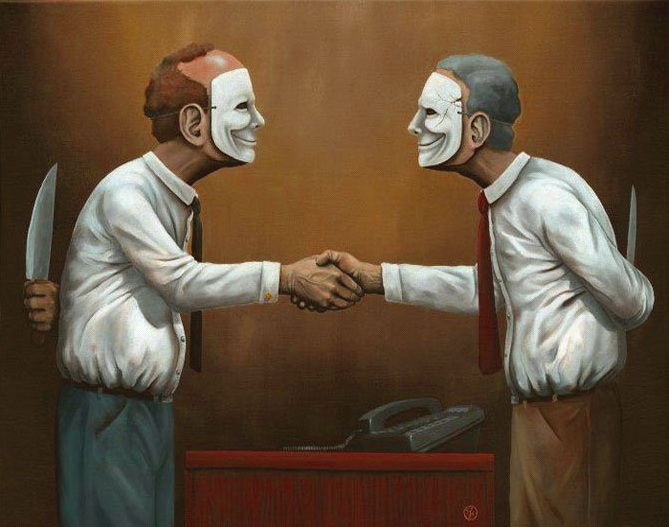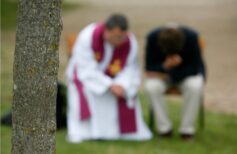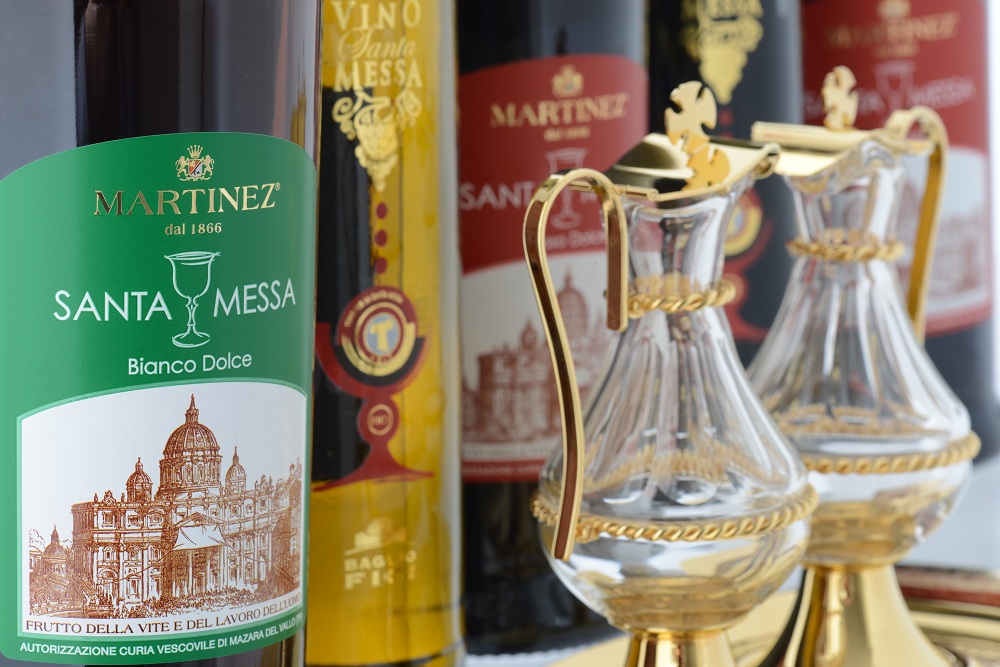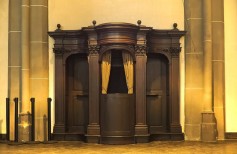What is the meaning of the seven Deadly Sins? Where do they come from and how were they defined throughout history? Why are they seven? Let’s find out together.
Contents
In order to understand the meaning of the seven Deadly Sins, first we need to clarify that it is actually wrong to call them ‘deadly sins’. What we know as deadly sins are more accurately the capital vices, that is, those imperfections of our personalities and inclinations of our souls that determine harmful behaviors for human beings and those surrounding them. For Christians, those vices are exactly the cause of the sin, hence the confusion that makes us consider capital sins and vices as the same thing. In fact, a sin is an effect, a consequence, of the vice. The opposite of vices, in the Christian sphere but not only, are virtues.
Il Latin, the word vĭtĭum meant the lack of something, whether a physical or a moral flaw, or a deviated habit, that is a flaw of the spirit. The concept of the seven capital vices is prior to the advent of Christianism.
But why ‘Capital Sin’? The adjective capital comes from ‘capitalis’, head, and indicates how these flaws in particular are the worst, the most serious deviances that alter the human nature itself.
History of the seven Deadly Sins
Already in the IV century BC, in his essay Nicomachean Ethics, the Greek philosopher Aristotle stated that every virtue or good quality turns into a vice, a flaw, if brought to an excess. That is the origin of the idea that the virtue should be exactly halfway between the lack of a feeling or inclination and its excess. It’s the theory of the golden mean, which medieval philosophers describe as ‘In medio stat virtus’, Virtue stands in the middle, close to what Aristotle stated indeed:“μέσον τε καὶ ἄριστον”, The middle is best.
For example, if we consider the sphere of pleasure and pain, the virtue we examine here is Temperance, the lack of which will lead to Insensitivity, while its excess will lead to Dissoluteness.
Aristotle is the one who defined the capital vices as the clothes of evil. That’s because people who indulge in the same vice over and over are actually weaving some sort of dress, which pushes them to sin more and more. The same happens to those who cultivate a virtue, even though the results are of course opposite.
Concerning the capital vices in the Catholic sphere, the first monks made a list. In particular, Evagrius Ponticus, Greek writer and ascetic who lived in the IV AD, still appreciated today as theologian in the Christian West and adored as a father of monastic life; he was the first to list eight capital vices:
- gluttony
- lust
- greed
- wrath
- sorrow
- sloth
- vainglory
- pride
Later, sorrow, which does not allow appreciating the work of God, will disappear and will be absorbed by sloth or envy, added later, while vainglory will be an element of pride.
Evagrius defined the eight vices as evil spirits or thoughts and even suggested a few methods to fight them.
During the age of Enlightenment, the concepts of vice and virtue went lost, like many other moral principles tied to the past. In fact, according to the illuminist view of human progress and development, both on a mental and a material level, but especially towards the industrial, commercial and financial development of the society, both vices and virtues were necessary.
During the 19th and 20th centuries, and still today, capital vices became subject of interesting studies and considerations among moral philosophy, human psychology and theology; they became object of many essays, starting from Kant‘s Pragmatic Anthropology, who considered vices as an expression of human typology.
Why are the deadly sins seven?
According to different ancient cultures, number 7 symbolized perfection, wholeness. Let’s just think of the seven Egyptian plagues, the seven branches of the Jewish candelabra Menorah, but also the seven fundamental attributes of Allah (life, knowledge, power, will, hearing, sight and word), the seven Gods of happiness in Buddhism and Shintoism, just to name a few.

The Menorah: history and meaning of the Jewish candelabra
The Menorah is one of the main symbols of the Jewish world. It is a seven-branched oil lamp…
Even Catholicism made number seven its own, recognizing the powerful symbolism in it. It is the divine number per excellence, because it recalls God’s rest after the Creation. Seven are the sacraments as well (Baptism, Confirmation, Eucharist, Penitence, Extreme Unction, Holy Orders, Matrimony), as the gifts of the Holy Spirit (wisdom, understanding, counsel, fortitude, knowledge, piety and fear of the Lord), the seven pains of Mary and many others.
Even in the Apocalypse by John, we read of 7 broken Seals, 7 trumpets played by 7 Angels, 7 Prodigies and 7 Cups of the Wrath of God.
In this symbolical frame, the fact that there are seven virtues (3 are theological: faith, hope and charity, and 4 are cardinals: justice, temperance, prudence and fortitude) and seven capital vices is surely not accidental.
We saw that according to Evangrius Ponticus and other Western monks, sins were eight and not seven. That’s because the symbolism of numbers in the past used to vary a lot between Western and Eastern world.
Saint Thomas Aquinas identified seven main temptations triggered by the desire of men towards four goods and their will to escape from three of them.
Here are the goods men desire:
The first good is spiritual, and is self-awareness, awareness of our own excellence: if desired too much, it generates pride.
The two other goods are related to the body: body preservation and conservation of the species.
Consumption of food and drinks, if exasperated, leads to gluttony, while sexual desire brought to an excess causes lust.
The fourth good is wealth: when desired too much, it results in greed.
Here are the goods men spurn:
The spiritual good: if neglected because of laziness, it leads to sloth.
The good of your neighbor, which men spurn because it threatens to cast shadows upon their self-awareness, generates envy.
The good of others, which men run away from when looking for damage and revenge, unleashes wrath.
What are the seven Deadly Sins?
Let’s get to the list of the 7 capital vices or 7 deadly sins.
Pride
The proud diminishes others to claim his superiority, real or presumed, in any field. Strong of such awareness of superiority, he does not respect people and laws because he is convinced that he is worth more than anything else. Pride shows in different ways. It can imply submission of other people, or rather the demand of their admiration. It comes from a desire to excel, to be recognized as the best compared to the others, thanks to real or just demanded merits. It is considered as the most deadly sin, because the proud believes he is so much better even than God, that he acts as a judge towards others.
From pride come:
– Vanity
– Delusions of grandeur
– Judgment
– Omnipotence
– Will to subdue

Envy
The envious hates his neighbor because he owns something he doesn’t. Envy comes from the awareness that someone else owns qualities or goods one does not have. It implies the comparison to others, and the hatred for what they have. As a result, the envious person enjoys other people losses and disgraces, because only that would make the envious feel higher than his misery. In fact, he does not pursue to improve his conditions; he just waits for others’ to get worse.
From envy come:
– Jealousy
– Constantly comparing with others
– Negative self-judgement
Lust
Lust is related to pleasure (whether sexual or not) end in itself, exasperated in impulses and longings. A fruitless pleasure that does not imply love nor desire for reproduction; it is just the urge to enjoy the act itself, with no respect nor consideration for oneself or the other person. While sex between lovers is an experience that elevates love and physical and spiritual union, lust leads to separation from each other, and even from one selves, in some kind of beastly blur, only to pursue physical satisfaction.
From lust come:
– Incapability to welcome others
– Internal emptiness
– Insatiability
Gluttony
Gluttony is not just an excessive desire for food, but for anything. Objects, experiences, money, even emotions, insatiably and avidly pursued.
Those who indulge in gluttony live in a constant state of dissatisfaction, devoured by their insatiable hunger, be it material or spiritual. Even a hyperactive mind, which consumes itself in its same, hectic thinking, can be a symptom of gluttony, such as an excessive sexual desire that also results in lust.
From gluttony come:
– Cupidity
– Waste
– Worries
Sloth
Those who practice sloth refuse life. The sloths drags themselves in constant boredom and passiveness, which lead them to do nothing. A form of sloth can also be living in a mechanical way, refusing evolution, change, development of things and situations. Those living in sloth wish that everything were plain, always the same and neutral, with no joys nor pains. Of course, those suffering from it also neglect spiritual and divine matters, and that is why sloth is an abominable sin.
From sloth come:
– Mechanicalness
– Scarce opening to new things
– Paralysis
– Boredom
Wrath
Wrath makes minds blind and unleashes a beastly rage into men, something unstoppable. The heart is empty, the reason is blind, and only negative thoughts fuel the mind instigating hatred, resentment and desire for revenge. This vice is also implacable, because even if those suffering from it are able to destroy their enemy, it will not cease to torment them.
From wrath come:
– Petulance
– Meanness
– Violence
– Rage
– Frustration

Greed
Greed is the excessive and morbid attachment to material goods, and in that, it is similar to gluttony, but the greedy is also obsessed with never having enough, and the fear others can deprive him from it. The greedy lives as a prisoner of what he owns and is never tired to amass. He puts the goods and wealth he already owns and those he desires above anything else, and that is why greed is considered as a form of idolatry, because the greedy loves his goods more than he loves God.
From greed come:
– Morbid attachment
– Spiritual blindness
– Avidity


























